Black Rock Forest
by Tim Poon
When we hear about the American Museum of Natural History, we immediately imagine the breathtaking exhibits that the museum has to offer, or the 26th President of the United States, Theodore Roosevelt, who helped create the museum. Not many people think about the large Education Department in the museum that educates New York City’s youth. The museum has programs ranging from pre-k to college students. I started my career at the museum with the CUNY Service Corps and I am now a Teaching Assistant involved in various programs in the museum. One program in particular is having a profound impact on high school students, the Science Research and Mentoring Program.
The Science Research and Mentoring Program, also known as SRMP pairs high school students with AMNH scientists to conduct ongoing research projects. Once the mentees are accepted into the program, they first have to go through a rigorous two weeks of classes in the museum. Then the museum takes the students to Black Rock Forest (a 3750 acres preserve in the Hudson Highlands) for five days to experience the great outdoors and collect data on painted/snapping turtles. This is a great experience for the students as they are able to experience the great outdoors and be away from the busy city life. Personally for me, it was also a great experience because I was able to experience many things for the first time, including a close connection to the natural world.
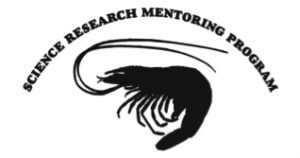
Black Rock Forest is located approximately 60 miles from NYC. For the SRMP class of 2017, we brought 55 SRMP mentees with us. We stayed in the facility that the Black Rock Forest Consortium offers. The facility is open to many researchers and educational programs. It is a very environmentally friendly building. It obtains its water from underground wells, it’s electricity from solar panels (supported by the grid system), gas from the main system, heating/cooling from a geothermal system, and all the toilets use no water; all the human waste is stored in a containment tank and it is reused. Some instructors slept outdoors in the tents and all the mentees stayed in the rooms.
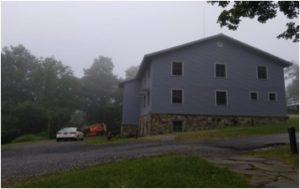
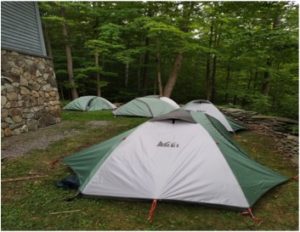
On the first day, we hiked for many miles and set up the turtle traps in various ponds. Another instructor and I set up a campfire for the night as we ate our dinner in the middle of the forest. It was a unique experience for me because I learned how to set up a campfire, something I did for the first time. Afterward, we hiked back to the facility in pitch darkness. We were able to see stars that we would have never been able to see in the city. Most of the students were amazed by how clearly they were able to see the stars.
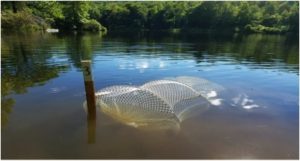

We checked the turtle traps daily for turtles and if there were any turtles, we would ensure that there was a microchip tracker in the turtle. Afterward, we would collect data such as the sex, length and size of the turtle. We found 14 turtles in total and one turtle in particular- Stumpy- was caught 18 times and was first caught in 1997. On the third day, we caught a painted turtle without a microchip, and I was able to insert a microchip tracker into a painted turtle for the first time.
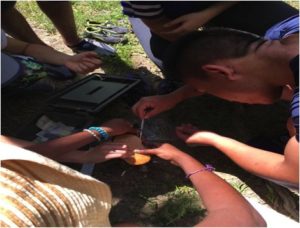
While removing the turtle traps on the second-to-last day, I had to walk in the water to each of the turtle trap locations so we could record the GPS coordinates. After retrieving the last trap, I noticed that something was stuck to my water shoes. I looked closely and saw that a leech had burrowed its head into my water shoes. I removed the leech, and the students and I wanted to see how long it would take for it to attach itself to someone. I decided to be the volunteer and we put the leech on my left leg. It immediately hooked itself into my leg and approximately 40 minutes later I removed it.
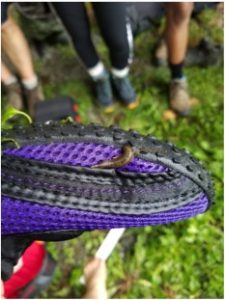
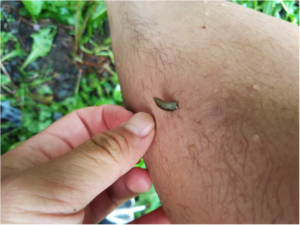
On the final day we hiked to the highest point in the forest and took a group picture. At 1,400 feet, I was able to see a hint of civilization. The roads and houses we built became so tiny and insignificant. At that point, I realized how insignificant we are as human beings. We can always try and conquer nature but nature will always win in the end. We are merely a small portion of the Earth and have existed only for a small fraction of all the time on earth. During one of the hikes, we came across this sign on a tree. The pressure from the tree had bent the sign out of shape and the tree had actually grown over it. It was almost as if it was swallowing the sign. The nails that held the sign on the tree had disappeared as it dissolved into the tree. Everything that we built and made on earth will disappear in a very short amount of time. Planet earth doesn’t need us; we on the other hand definitely need planet earth.
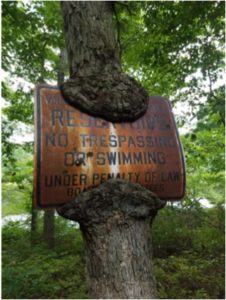

Realizing our insignificance, I asked myself this- “Why are we all working so hard trying to achieve material things in life?” Everything dissolves back into the environment in the end, why should we stress over everything in life? I learned to truly relax and be more carefree. Life in the city is very stressful, and one of the best times of my life was the five days I spent in Black Rock Forest. There’s something truly amazing about sitting on a rock overlooking the forest, sitting by the pond and watching the wind move the water, or sitting on a log and simply watching water run down a river.
In terms of environmental science, it is very important for youths to explore and experience the natural world. Most city youths never have the chance to experience the great outdoors. Central park and manmade parks are nowhere close to wild nature. When I went to Central Park, I didn’t get the same refreshing feeling that I get from wild nature. The 55 high school students had a great time and they were amazed by how much fun they can have going into the woods without cellular signal and concentrating on life by the hour. I felt more at home in the forest than in the city, and I am sure that many kids who were with me felt the same way. Having experiences in the great outdoors also increases the chance that someone will care for the environment and make pro-environmental decisions. City youths need more programs like SRMP so they can explore beyond their boundaries and get in touch with the great outdoors.